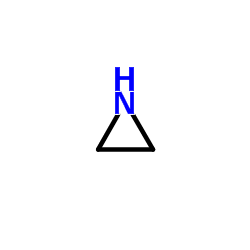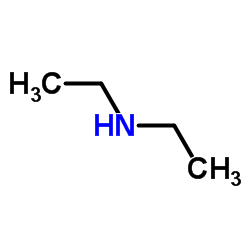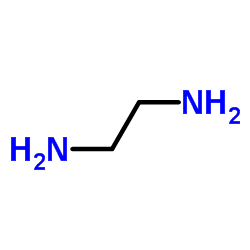24426-16-2
| Name | N'-[2-(diethylamino)ethyl]ethane-1,2-diamine |
|---|---|
| Synonyms |
1,1-Diethyldiethylenetriamine
EINECS 246-242-2 N,N-Diethyldiethylenetriamine MFCD00037060 Diethylenetriamine,1-diethyl |
| Density | 0.865 g/mL at 25 °C(lit.) |
|---|---|
| Boiling Point | 225-230 °C(lit.) |
| Molecular Formula | C8H21N3 |
| Molecular Weight | 159.27200 |
| Flash Point | 225-230°C |
| Exact Mass | 159.17400 |
| PSA | 41.29000 |
| LogP | 0.96770 |
| Vapour Pressure | 0.0796mmHg at 25°C |
| Index of Refraction | n20/D 1.459(lit.) |
|
Section1. IDENTIFICATION OF THE SUBSTANCE/MIXTURE Product name: N,N-Diethyldiethylenetriamine Section2. HAZARDS IDENTIFICATION Classification of the substance or mixture According to Regulation (EC) No1272/2008 Skin corrosion (Category 1B) According to European Directive 67/548/EEC as amended.
Causes burns. Label elements Pictogram Signal wordDanger Hazard statement(s) Causes severe skin burns and eye damage. Precautionary statement(s) Wear protective gloves/protective clothing/eye protection/face protection. P305 + P351 + P338IF IN EYES: Rinse cautiously with water for several minutes. Remove contact lenses, if present and easy to do. Continue rinsing. Immediately call a POISON CENTER or doctor/physician. Hazard symbol(s) CCorrosive R-phrase(s) R34Causes burns. S-phrase(s) S26In case of contact with eyes, rinse immediately with plenty of water and seek medical advice. S27Take off immediately all contaminated clothing. S36/37/39Wear suitable protective clothing, gloves and eye/face protection. S45In case of accident or if you feel unwell, seek medical advice immediately (show the label where possible). Other hazards - none Section3. COMPOSITION/INFORMATION ON INGREDIENTS Formula: C8H21N3 Molecular Weight: 159,27 g/mol CAS-No.EC-No.Index-No.ClassificationConcentration N'-(2-Aminoethyl)-N,N-diethylethylenediamine 24426-16-2246-242-2-Skin Corr. 1B; H314- C, R34 For the full text of the H-Statements mentioned in this Section, see Section 16. Section4. FIRST AID MEASURES General advice Consult a physician. Show this safety data sheet to the doctor in attendance. If inhaled If breathed in, move person into fresh air. If not breathing give artificial respiration Consult a physician. In case of skin contact Take off contaminated clothing and shoes immediately. Wash off with soap and plenty of water. Consult a physician. In case of eye contact Rinse thoroughly with plenty of water for at least 15 minutes and consult a physician. If swallowed Do NOT induce vomiting. Never give anything by mouth to an unconscious person. Rinse mouth with water. Consult a physician. Section5. FIRE-FIGHTING MEASURES Suitable extinguishing media Use water spray, alcohol-resistant foam, dry chemical or carbon dioxide. Special protective equipment for fire-fighters Wear self contained breathing apparatus for fire fighting if necessary. Section6. ACCIDENTAL RELEASE MEASURES Personal precautions Use personal protective equipment. Avoid breathing vapors, mist or gas. Ensure adequate ventilation. Evacuate personnel to safe areas. Environmental precautions Do not let product enter drains. Methods and materials for containment and cleaning up Soak up with inert absorbent material and dispose of as hazardous waste. Keep in suitable, closed containers for disposal. Section7. HANDLING AND STORAGE Precautions for safe handling Avoid inhalation of vapour or mist. Normal measures for preventive fire protection. Conditions for safe storage Store in cool place. Keep container tightly closed in a dry and well-ventilated place. Containers which are opened must be carefully resealed and kept upright to prevent leakage. Section8. EXPOSURE CONTROLS/PERSONAL PROTECTION Personal protective equipment Respiratory protection Where risk assessment shows air-purifying respirators are appropriate use a full-face respirator with multi-purpose combination (US) or type ABEK (EN 14387) respirator cartridges as a backup to engineering controls. If the respirator is the sole means of protection, use a full-face supplied air respirator. Use respirators and components tested and approved under appropriate government standards such as NIOSH (US) or CEN (EU). Hand protection The selected protective gloves have to satisfy the specifications of EU Directive 89/686/EEC and the standard EN 374 derived from it. Handle with gloves. Eye protection Tightly fitting safety goggles. Faceshield (8-inch minimum). Skin and body protection Choose body protection according to the amount and concentration of the dangerous substance at the work place. Hygiene measures Handle in accordance with good industrial hygiene and safety practice. Wash hands before breaks and at the end of workday. Section9. PHYSICAL AND CHEMICAL PROPERTIES Appearance Formliquid Colourcolourless Safety data pH no data available Melting pointno data available Boiling point225 - 230 °C - lit. Flash point95 °C - closed cup Ignition temperature no data available Lower explosion limit no data available Upper explosion limit no data available Density0,865 g/cm3 at 25 °C Water solubilityno data available Section10. STABILITY AND REACTIVITY Chemical stability Stable under recommended storage conditions. Conditions to avoid no data available Materials to avoid Strong oxidizing agents Hazardous decomposition products Hazardous decomposition products formed under fire conditions. - Carbon oxides, nitrogen oxides (NOx) Section11. TOXICOLOGICAL INFORMATION Acute toxicity no data available Skin corrosion/irritation no data available Serious eye damage/eye irritation no data available Respiratory or skin sensitization no data available Germ cell mutagenicity no data available Carcinogenicity IARC: No component of this product present at levels greater than or equal to 0.1% is identified as probable, possible or confirmed human carcinogen by IARC. Reproductive toxicity no data available Specific target organ toxicity - single exposure no data available Specific target organ toxicity - repeated exposure no data available Aspiration hazard no data available Potential health effects InhalationMay be harmful if inhaled. Material is extremely destructive to the tissue of the mucous membranes and upper respiratory tract. IngestionMay be harmful if swallowed. Causes burns. SkinMay be harmful if absorbed through skin. Causes skin burns. EyesCauses eye burns. Signs and Symptoms of Exposure Material is extremely destructive to tissue of the mucous membranes and upper respiratory tract, eyes, and skin., spasm, inflammation and edema of the larynx, spasm, inflammation and edema of the bronchi, pneumonitis, pulmonary edema, burning sensation, Cough, wheezing, laryngitis, Shortness of breath, Headache, Nausea Additional Information RTECS: no data available Section12. ECOLOGICAL INFORMATION Toxicity no data available Persistence and degradability no data available Bioaccumulative potential no data available Mobility in soil no data available PBT and vPvB assessment no data available Other adverse effects no data available Section13. DISPOSAL CONSIDERATIONS Product Observe all federal, state, and local environmental regulations. Contact a licensed professional waste disposal service to dispose of this material. Dissolve or mix the material with a combustible solvent and burn in a chemical incinerator equipped with an afterburner and scrubber. Contaminated packaging Dispose of as unused product. Section14. TRANSPORT INFORMATION ADR/RID UN-Number: 2735 Class: 8Packing group: II Proper shipping name: POLYAMINES, LIQUID, CORROSIVE, N.O.S. (N'-(2-Aminoethyl)-N,N- diethylethylenediamine) IMDG UN-Number: 2735 Class: 8Packing group: IIEMS-No: F-A, S-B Proper shipping name: POLYAMINES, LIQUID, CORROSIVE, N.O.S. (N'-(2-Aminoethyl)-N,N- diethylethylenediamine) Marine pollutant: No IATA UN-Number: 2735 Class: 8Packing group: II Proper shipping name: Polyamines, liquid, corrosive, n.o.s. (N'-(2-Aminoethyl)-N,N-diethylethylenediamine) Section15. REGULATORY INFORMATION SECTION 16 - ADDITIONAL INFORMATION N/A |
| Symbol |

GHS05 |
|---|---|
| Signal Word | Danger |
| Hazard Statements | H314 |
| Precautionary Statements | P280-P305 + P351 + P338-P310 |
| Personal Protective Equipment | Faceshields;full-face respirator (US);Gloves;Goggles;multi-purpose combination respirator cartridge (US);type ABEK (EN14387) respirator filter |
| Hazard Codes | C: Corrosive; |
| Risk Phrases | R34 |
| Safety Phrases | S26-S27-S36/37/39-S45 |
| RIDADR | UN 2735 8/PG 2 |
| WGK Germany | 3 |
| Packaging Group | III |
| Hazard Class | 8 |
| HS Code | 2921290000 |
| HS Code | 2921290000 |
|---|---|
| Summary | 2921290000 other acyclic polyamines and their derivatives; salts thereof。Supervision conditions:None。VAT:17.0%。Tax rebate rate:9.0%。MFN tariff:6.5%。General tariff:30.0% |





